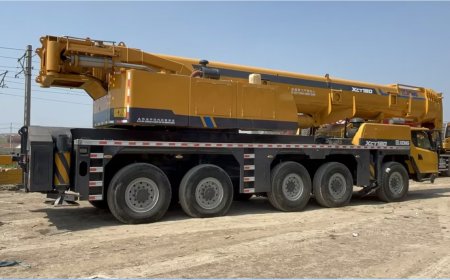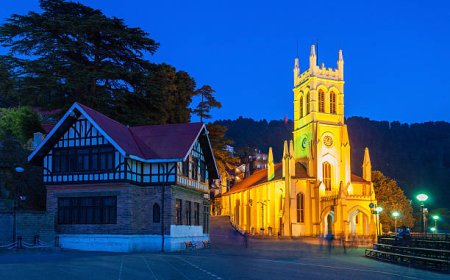How to Prepare for Your First High-Altitude Himalayan Trek
Trekking in the Himalayas is a dream for many adventure enthusiasts, and high-altitude treks offer a unique combination of natural beauty, personal challenge, and spiritual reward. Whether you're aiming to complete the Nag Tibba Trek, the majestic Hampta Pass Trek, or the more demanding Bali Pass Trek, proper preparation is key to ensuring a safe, enjoyable, and unforgettable experience.
Trekking in the Himalayas is a dream for many adventure enthusiasts, and high-altitude treks offer a unique combination of natural beauty, personal challenge, and spiritual reward. Whether you're aiming to complete the Nag Tibba Trek, the majestic Hampta Pass Trek, or the more demanding Bali Pass Trek, proper preparation is key to ensuring a safe, enjoyable, and unforgettable experience.
In this guide, well explore how to prepare for your first high-altitude Himalayan trek, covering training tips, packing essentials, acclimatization advice, and what to expect on popular trails like the Brahmatal Trek, Dodital Trek, Kuari Pass Trek, Valley of Flowers trek, Kedarkantha Trek, and Pangarchulla Trek.
Why High-Altitude Preparation Matters
Trekking at altitudes above 8,000 feet puts stress on your body. Lower oxygen levels can lead to fatigue, breathlessness, or even Acute Mountain Sickness (AMS). Thats why physical fitness, mental preparation, and knowledge of trail conditions play a crucial role in a successful Himalayan trek.
Whether you're tackling a moderate trail like the Nag Tibba Trek or a strenuous one like the Bali Pass Trek, preparation enhances safety and enjoyment.
1. Choose the Right Trek for Your Fitness Level
Before you start training, pick a trek that suits your current fitness level. Heres a quick overview of popular high-altitude treks offered by Himalaya Shelter:
-
Nag Tibba Trek (9,915 ft): Great for beginners and weekend travelers.
-
Dodital Trek (10,000+ ft): Moderate trek with forest trails and a serene lake.
-
Brahmatal Trek (12,250 ft): Winter snow trek with panoramic Himalayan views.
-
Valley of Flowers Trek (12,000 ft): A scenic monsoon trek, ideal for nature lovers.
-
Kedarkantha Trek (12,500 ft): Popular winter trek for beginners.
-
Hampta Pass Trek (14,000 ft): A dramatic crossover trek for fit intermediates.
-
Kuari Pass Trek (12,500 ft): Offers classic Himalayan views and rich biodiversity.
-
Pangarchulla Trek (15,000+ ft): Demands stamina and summit climbing skills.
-
Bali Pass Trek (16,200 ft): High-altitude expedition, recommended for experienced trekkers.
2. Build Cardiovascular Endurance
High-altitude trekking demands sustained energy and strong lung capacity. Heres how to prepare:
-
Jog or brisk walk for 3060 minutes, 45 days a week.
-
Add stair climbing or hiking practice with a backpack.
-
Cycling or swimming can also build cardiovascular strength.
Train for at least 8 weeks before the trek. For demanding routes like the Kuari Pass Trek or Pangarchulla Trek, allow more time.
3. Strength and Flexibility Training
Leg strength, balance, and core endurance are essential for trekking on rocky or snow-covered terrain.
-
Do lunges, squats, and step-ups.
-
Add planks and core rotations for stability.
-
Practice yoga for flexibility and breathing control.
Strong muscles help you manage long descents and ascents, especially in treks like the Hampta Pass Trek or Kedarkantha Trek.
4. Mental Preparation
The Himalayas test not just your body but your mind. Long days, extreme weather, or altitude-related fatigue can affect morale.
-
Visualize success and difficult moments.
-
Practice meditation or deep breathing to stay calm.
-
Read or watch videos about the treks youre attempting.
Treks like the Valley of Flowers trek or Dodital Trek may be peaceful, but tougher ones like Bali Pass Trek or Pangarchulla Trek require mental fortitude.
5. Understand Acclimatization
Altitude sickness can affect anyone. Key acclimatization tips:
-
Ascend gradually; dont gain more than 600-800 meters in a day.
-
Stay hydrated, but avoid alcohol and smoking.
-
Rest well and avoid overexertion early in the trek.
On longer treks such as the Hampta Pass Trek or Kuari Pass Trek, Himalaya Shelter builds in acclimatization days to ensure safe progression.
6. What to Pack for a High-Altitude Trek
Packing right can make or break your trekking experience.
Clothing:
-
Base layer: Thermal innerwear
-
Middle layer: Fleece or light down jacket
-
Outer layer: Waterproof windproof jacket
-
Bottoms: Trek pants and thermal bottoms
-
Accessories: Gloves, beanie, sun hat, neck gaiter
Footwear:
-
Trekking boots (ankle-high, waterproof)
-
Wool socks and liner socks
Essentials:
-
Daypack (30-40L) with rain cover
-
Trekking pole
-
Sunglasses & sunscreen
-
Water bottles/hydration pack
-
Personal medication
-
Headlamp
Depending on the season, expect snow in Brahmatal Trek, Kedarkantha Trek, or Pangarchulla Trek, and rain in Valley of Flowers trek.
7. Hydration and Nutrition
At altitude, your body dehydrates faster and craves more energy.
-
Drink 3-4 liters of water per day.
-
Carry electrolyte powder or ORS.
-
Snack on nuts, energy bars, and dried fruits.
-
Eat warm, nutritious meals (provided by trek operators like Himalaya Shelter).
8. Know the Weather and Trek Season
Timing your trek is important:
-
Winter (DecFeb): Ideal for Kedarkantha and Brahmatal Trek.
-
Spring (MarApr): Great for Nag Tibba and Dodital Trek.
-
Summer (MayJune): Best for Kuari Pass and Hampta Pass Trek.
-
Monsoon (JulySept): Visit Valley of Flowers or take on Bali Pass.
-
Autumn (OctNov): Great views on Pangarchulla Trek and others.
9. Choose a Reliable Trekking Operator
A reputed trekking company ensures better safety, experienced guides, and environmental responsibility.
Himalaya Shelter is known for its:
-
Trained staff and expert guides
-
Thoughtful itineraries with acclimatization
-
Quality equipment and support
-
Deep local knowledge and eco-conscious practices
Whether you choose a gentle trail like the Nag Tibba Trek or a challenging one like the Bali Pass Trek, they make the experience smooth and memorable.
Final Thoughts
Your first high-altitude Himalayan trek is a life-changing experienceone filled with awe-inspiring scenery, personal growth, and physical achievement. But the key to enjoying every step lies in preparation.
With the right training, gear, mindset, and a trustworthy partner like Himalaya Shelter, you'll be ready to conquer trails like the Hampta Pass Trek, Kuari Pass Trek, or even the mystical Valley of Flowers trek.
So lace up your boots, breathe in the mountain air, and get ready to answer the call of the Himalayas in 2025.





















